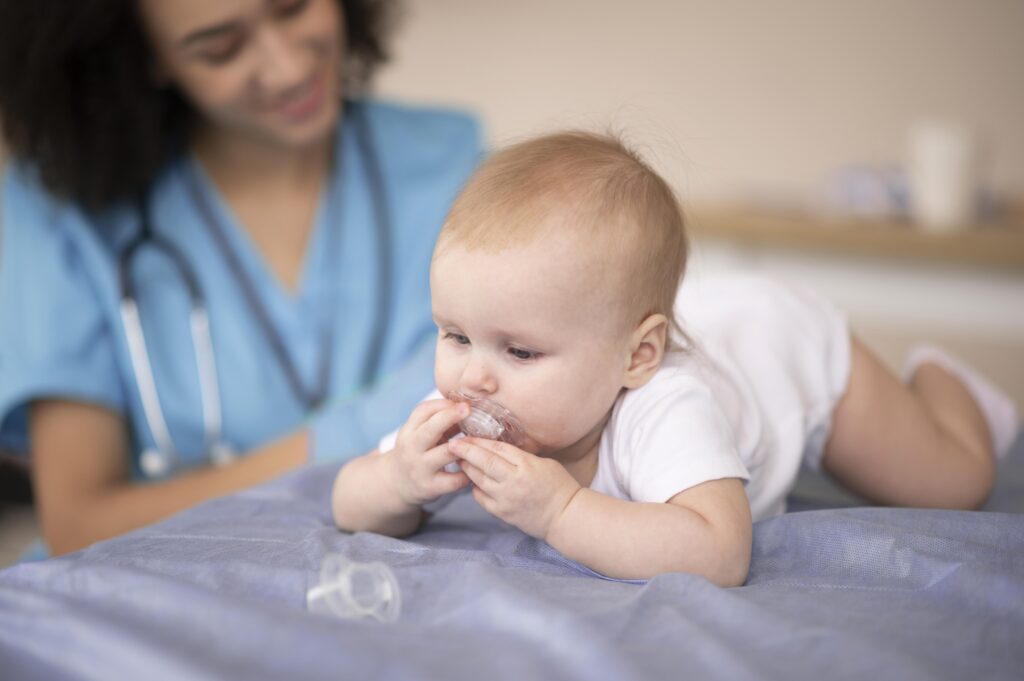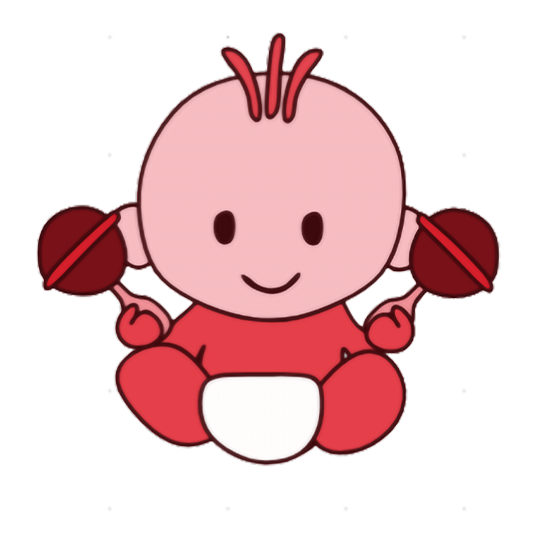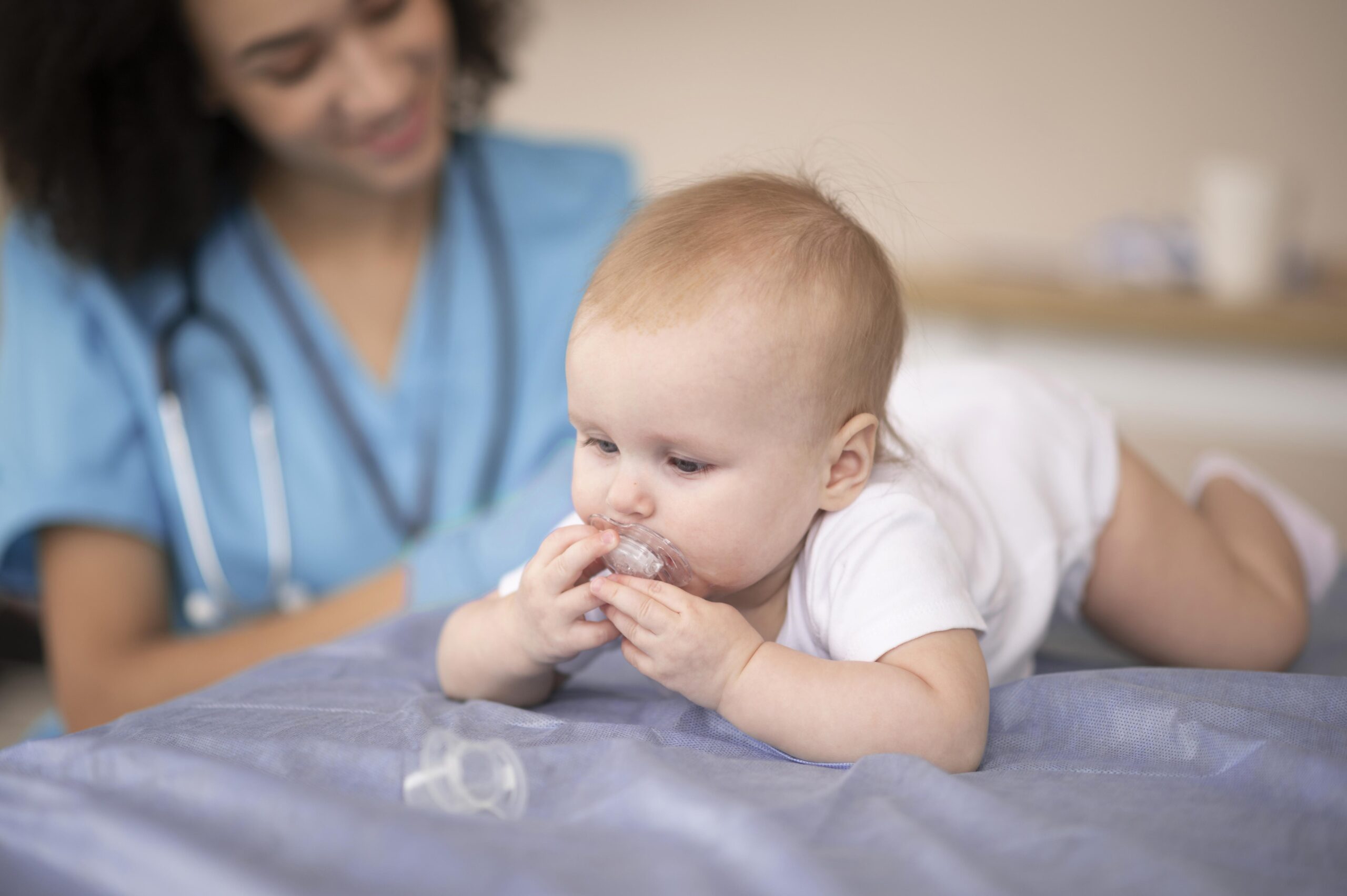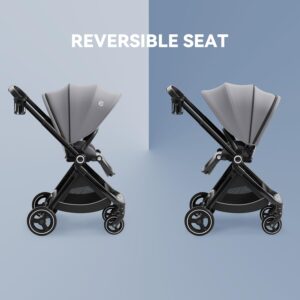Febrile seizures are a type of seizure that occur in children between the ages of 6 months and 5 years old. They are typically caused by a sudden spike in body temperature, usually due to an infection. It can be frightening for parents to witness, but they are generally harmless and do not cause any long-term damage.

There are two types of febrile/feverish seizures: simple and complex. Simple febrile seizures are the most common and typically last less than 15 minutes. They involve a child losing consciousness and experiencing rhythmic jerking movements of their arms and legs. Complex febrile seizures, on the other hand, last longer than 15 minutes and may involve only one side of the body or repeated seizures without a full recovery in between.
While febrile seizures can be scary to witness, it’s important for parents to remain calm and seek medical attention if necessary. Most children with febrile seizures do not require treatment, but in some cases, medication may be prescribed to prevent future seizures. It’s also important to monitor your child’s fever and take steps to lower it, such as giving them acetaminophen or ibuprofen and keeping them hydrated.
Ensure secure monitoring with non-WiFi baby monitors. Check out our blog post ‘10 Best Non-Wifi Baby Monitors for Secure & Interference-Free Monitoring in 2024‘ for top picks!
Definition Febrile Seizures and Overview
Febrile seizures are convulsions that occur in young children, typically between the ages of 6 months and 5 years, and are triggered by a fever. They are the most common type of seizure in children and are usually harmless.
During a febrile seizure, a child may experience muscle contractions, loss of consciousness, and shaking of the limbs. These seizures typically last for less than five minutes and do not cause any long-term damage. However, they can be frightening for parents to witness.
There are two types of it: simple and complex. Simple febrile seizures are the most common type and typically last for less than 15 minutes. Complex febrile seizures, on the other hand, last longer than 15 minutes and may involve only one side of the body.
It’s caused by a sudden increase in body temperature, often due to an infection. They can occur in children who are otherwise healthy and do not have a history of seizures. However, children who have had febrile seizures in the past are more likely to have them again in the future.
While febrile seizures can be scary for parents, they are usually not a cause for concern. However, if a child has a febrile seizure that lasts longer than 5 minutes, or if they have multiple seizures in a short period of time, it is important to seek medical attention.
Stay mobile with top travel strollers for infants! Read our blog ‘10 Best Travel Strollers for Infants in 2024‘ for ultimate parenting on the go.
Epidemiology and Statistics
Prevalence
Feverish seizures are the most common type of seizure in children and occur in 2-5% of all children between the ages of 6 months and 5 years. They are more common in boys than girls and tend to occur in children with a family history of febrile seizures.
Discover expert advice for caregivers in our blog post ‘Bundle of Joy: Your Newborn Care Guide in 3 Steps‘.
Risk Factors
There are several risk factors associated with febrile seizures. These include:
- Age: It’s most common in children between the ages of 6 months and 5 years.
- Family history: Children with a family history of febrile seizures are more likely to experience them.
- High fever: Febrile seizures are more likely to occur when a child has a high fever (usually over 102°F or 38.9°C).
- Illness: Febrile seizures are most commonly associated with viral illnesses such as the flu or a cold.
It is important to note that while febrile seizures can be frightening to witness, they are usually not harmful and do not cause any long-term damage. However, it is important to seek medical attention if a child experiences a febrile seizure to rule out any underlying conditions that may be causing the fever.
Etiology and Pathophysiology
Feverish seizures are convulsions that occur in infants and young children, usually between the ages of 6 months and 5 years, in response to a fever. The exact cause of febrile seizures is not fully understood, but several factors have been identified as potential contributors.
One of the main factors is genetics. Studies have shown that there is a genetic component to feverish seizures, with certain genes being associated with an increased risk of developing them. Additionally, children with a family history of febrile seizures are more likely to experience them.
Another factor is the rapid rise in body temperature. Febrile seizures are more likely to occur when a child’s body temperature rises quickly, rather than gradually. This is because the rapid increase in temperature can cause changes in the brain that lead to seizures.
The pathophysiology of febrile seizures is also not fully understood, but it is believed to involve changes in the brain’s electrical activity. During a seizure, there is an abnormal and excessive discharge of electrical activity in the brain, which can cause the body to convulse.
It is important to note that febrile seizures are not caused by the fever itself, but rather by the underlying condition that is causing the fever. Common causes of fever in children include viral infections, bacterial infections, and immunizations.
Overall, while the exact etiology and pathophysiology of feverish seizures is not fully understood, several factors have been identified as potential contributors. Further research is needed to fully understand the underlying mechanisms of feverish seizures and to develop effective treatments.
Clinical Features and Presentation
Febrile seizures are the most common type of seizures in children and typically occur between the ages of 6 months and 5 years. In this section, we will discuss the clinical features and presentation of febrile seizures.
Symptomatology
Febrile seizures are usually characterized by a sudden onset of generalized tonic-clonic convulsions, which can last from a few seconds to several minutes. During the seizure, the child may lose consciousness and experience rhythmic jerking movements of the arms and legs. The child’s breathing may become irregular, and they may foam at the mouth or drool.
After the seizure, the child may be drowsy, confused, and have a headache. It is important to note that febrile seizures are not usually associated with any long-term neurological damage.
Duration and Types
Febrile seizures are classified into two types: simple and complex. Simple feverish seizures are brief, lasting less than 15 minutes, and do not recur within 24 hours. Complex feverish seizures last longer than 15 minutes, recur within 24 hours, or are focal in nature.
It is important to note that the duration of the seizure does not correlate with the severity of the underlying illness. Febrile seizures are usually self-limited and do not require any specific treatment, except for the treatment of the underlying illness.
In summary, febrile seizures are a common type of seizure in children and are usually associated with a sudden onset of generalized tonic-clonic convulsions. They are classified into two types: simple and complex, based on their duration and recurrence. It is important to seek medical attention if your child experiences a feverish seizure to rule out any underlying pathology.
Diagnosis
Clinical Assessment
Febrile seizures are typically diagnosed based on clinical assessment and history. A detailed history of the seizure, including duration, symptoms, and any associated illnesses or infections, should be obtained. The age of the child and family history of seizures should also be noted.
During the clinical assessment, the child’s vital signs, including temperature, should be monitored. The presence of fever is a key factor in the diagnosis of feverish seizures. The child’s neurological status should also be evaluated, including their level of consciousness, motor function, and reflexes.
Differential Diagnosis
Febrile seizures must be differentiated from other causes of seizures, such as epilepsy, meningitis, and encephalitis. A thorough physical examination and laboratory tests may be necessary to rule out these other conditions.
Laboratory and Imaging
Laboratory tests, such as a complete blood count and electrolyte panel, may be performed to evaluate for underlying infections or metabolic abnormalities. Imaging studies, such as a computed tomography (CT) scan or magnetic resonance imaging (MRI), may be necessary in certain cases to evaluate for structural abnormalities or intracranial pathology.
In some cases, a lumbar puncture may be necessary to evaluate for meningitis or encephalitis. However, this procedure should be performed with caution in children with feverish seizures, as it may increase the risk of recurrence.
Overall, the diagnosis of febrile seizures is based on a combination of clinical assessment, history, and laboratory and imaging studies.
Management and Treatment
Immediate Care
When a child has a febrile seizure, it’s important to take immediate action to ensure their safety. We recommend the following steps:
- Stay calm and keep the child on their side to prevent choking.
- Remove any nearby objects that could cause harm.
- Do not restrain the child or put anything in their mouth.
- Time the seizure and note any unusual movements or behaviors.
- Call for emergency medical assistance if the seizure lasts longer than five minutes or if the child has difficulty breathing or turns blue.
Long-Term Management
After a febrile seizure, it’s important to monitor the child’s health and take steps to prevent future seizures. We recommend the following long-term management strategies:
- Keep the child’s temperature under control with fever-reducing medications like acetaminophen or ibuprofen.
- Monitor the child’s health closely during illnesses and seek medical attention if necessary.
- Educate family members, caregivers, and teachers about feverish seizures and how to respond in case of an emergency.
- Consider medication to prevent future seizures in certain high-risk cases.
Overall, with proper management and treatment, most children with feverish seizures go on to live healthy, normal lives.
Prognosis and Outcomes
Febrile seizures are generally considered harmless and do not cause any long-term brain damage. The prognosis for children with febrile seizures is excellent, with the vast majority of children experiencing only one or two seizures in their lifetime.
In fact, studies have shown that up to 90% of children with febrile seizures will never have another seizure again. However, the risk of recurrence is higher in children who have certain risk factors such as a family history of febrile seizures, a young age at the time of the first seizure, and a low-grade fever at the time of the seizure.
While febrile seizures are not typically associated with any long-term neurological consequences, there is a small risk of developing epilepsy later in life. However, this risk is still relatively low, with only about 2-5% of children with febrile seizures developing epilepsy.
Overall, the prognosis for children with febrile seizures is excellent. Most children will outgrow the condition by the time they reach school age, and the risk of any long-term neurological consequences is very low. However, it is important for parents to seek medical attention if their child experiences a febrile seizure, as there may be an underlying cause that needs to be addressed.
Prevention and Education
Caregiver Guidance
As febrile seizures are often associated with high fever, it is important for caregivers to take measures to prevent fever from escalating. This includes administering fever-reducing medication such as acetaminophen or ibuprofen, ensuring the child stays hydrated, and keeping the child in a cool environment. Additionally, caregivers should be aware of the signs and symptoms of febrile seizures, and seek medical attention immediately if a seizure occurs.
Vaccination and Febrile Seizures
Vaccination is an important tool in preventing febrile seizures. Vaccines protect against infectious diseases that can cause fevers, and therefore reduce the likelihood of febrile seizures occurring. It is important for caregivers to follow the recommended vaccination schedule for their child, as this can help prevent a range of illnesses and associated complications.
However, it is important to note that some vaccines may cause fevers as a side effect. In these cases, caregivers should follow the same measures to prevent fever from escalating and be aware of the signs and symptoms of febrile seizures.
Overall, by following these preventative measures and staying informed about febrile seizures, caregivers can help reduce the risk of their child experiencing a seizure and ensure prompt medical attention if necessary.
Research and Emerging Therapies
We are constantly learning more about febrile seizures and potential treatments. Here are a few of the most promising areas of research:
Genetic Studies
Recent studies have identified several genes that may be associated with febrile seizures. This information could lead to personalized treatments based on a child’s genetic profile. However, more research is needed to fully understand the genetic factors involved in febrile seizures.
Anti-Inflammatory Drugs
Inflammation is thought to play a role in febrile seizures. As a result, anti-inflammatory drugs such as ibuprofen and acetaminophen are often used to prevent febrile seizures. However, there is still debate over the effectiveness of these drugs and whether they should be used in all cases.
Cannabidiol (CBD)
CBD is a non-psychoactive compound found in cannabis. Recent studies have shown that CBD may be effective in reducing the frequency and severity of seizures in children with epilepsy. While more research is needed, CBD may also hold promise as a treatment for febrile seizures.
Ketogenic Diet
The ketogenic diet is a high-fat, low-carbohydrate diet that has been shown to be effective in reducing seizures in children with epilepsy. While there is limited research on the use of the ketogenic diet for febrile seizures, some studies have shown promising results.
Overall, there is still much to learn about febrile seizures and how best to treat them. However, these emerging therapies offer hope for children and families affected by this condition.
Guidelines and Recommendations
Febrile seizures can be a frightening experience for parents and caregivers. However, it is important to remember that most febrile seizures are harmless and do not cause any long-term damage. Here are some guidelines and recommendations to help you deal with febrile seizures:
- Stay calm and keep the child safe: During a febrile seizure, it is important to stay calm and keep the child safe. Place the child on his or her side on a flat surface and remove any objects that could cause harm.
- Do not restrain the child: Do not try to restrain the child during a febrile seizure. This can cause more harm than good and may even prolong the seizure.
- Monitor the child’s breathing: Make sure the child’s airway is clear and monitor their breathing. If the child stops breathing, call for emergency medical help immediately.
- Lower the child’s temperature: Lowering the child’s temperature can help prevent future febrile seizures. You can do this by giving them a tepid bath or using acetaminophen or ibuprofen as directed by a healthcare provider.
- Seek medical attention if necessary: If the seizure lasts longer than five minutes or if the child has difficulty breathing or turns blue, seek medical attention immediately.
Overall, it is important to remember that febrile seizures are usually harmless and do not require any specific treatment. However, it is important to take steps to prevent future febrile seizures and seek medical attention if necessary.
Support and Resources
If your child has experienced a febrile seizure, it’s important to seek support and resources to help you navigate this experience. Here are some helpful resources:
Pediatrician
Your child’s pediatrician is your first point of contact for information and guidance. They can help you understand the underlying cause of the fever and seizure, as well as provide recommendations for treatment and prevention.
Support Groups
There are many support groups available for parents of children who have experienced febrile seizures. These groups can provide emotional support, as well as practical advice and resources. You can find support groups online or through your local hospital or pediatrician’s office.
Educational Materials
There are many educational materials available to help you understand febrile seizures and how to manage them. Your pediatrician may have pamphlets or other materials available, or you can find information online through reputable sources such as the American Academy of Pediatrics.
Emergency Services
If your child experiences a febrile seizure, it’s important to know what to do in an emergency. Make sure you have emergency services numbers readily available, and consider taking a CPR or first aid class to prepare yourself.
Remember, febrile seizures are a common condition and with the right support and resources, you can help your child manage this experience and stay healthy.
You might also like to read Colic in Babies: Causes, Symptoms, and Treatment
Frequently Asked Questions
What are the typical symptoms of a febrile seizure?
Febrile seizures are seizures that occur in children between the ages of 6 months to 5 years old. They are often associated with a fever and can last anywhere from a few seconds to a few minutes. During a febrile seizure, a child may experience convulsions, shaking, or twitching of the arms and legs, loss of consciousness, and difficulty breathing.
How can one treat a child experiencing a febrile seizure?
If your child is experiencing a febrile seizure, it is important to remain calm and keep them safe. Place your child on their side to prevent choking, remove any nearby objects that could cause harm, and do not try to restrain them. Call for emergency medical assistance if the seizure lasts longer than 5 minutes.
What are the potential long-term effects of recurrent febrile seizures?
Most children who experience febrile seizures do not experience any long-term effects. However, recurrent febrile seizures may increase the risk of developing epilepsy later in life.
What preventive measures can be taken to reduce the risk of febrile seizures?
There is no guaranteed way to prevent febrile seizures, but there are steps you can take to reduce the risk. These include keeping your child’s fever under control with acetaminophen or ibuprofen, ensuring your child is well-hydrated, and monitoring your child closely during times of illness.
Are there specific causes that trigger febrile seizures in children?
Febrile seizures are often triggered by a fever associated with an infection, such as a cold, flu, or ear infection. However, the exact cause of febrile seizures is not fully understood.
Can adults also experience febrile seizures, and how common are they?
Febrile seizures are most common in children between the ages of 6 months to 5 years old. While adults can also experience seizures associated with a fever, these are typically not classified as febrile seizures.
You might Like Best Infant Car Seats: Top Picks for Safety and Comfort 2024





